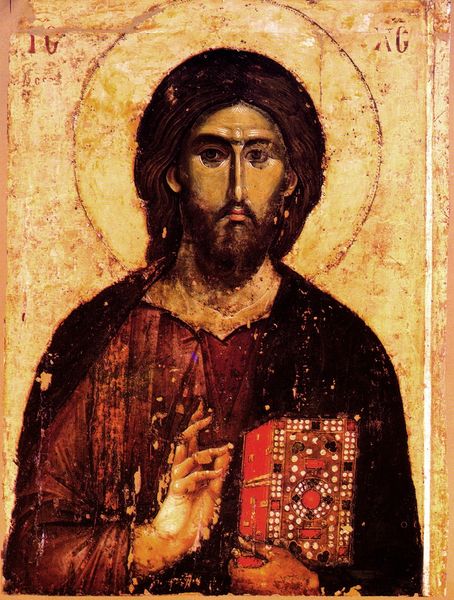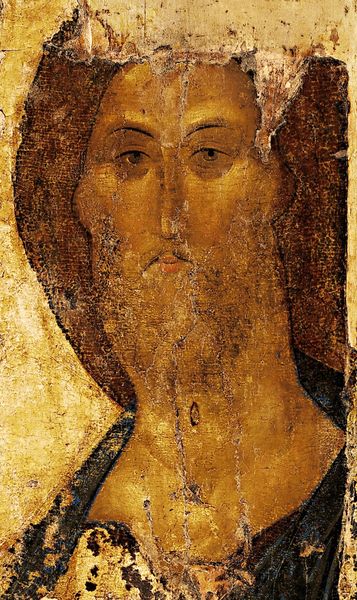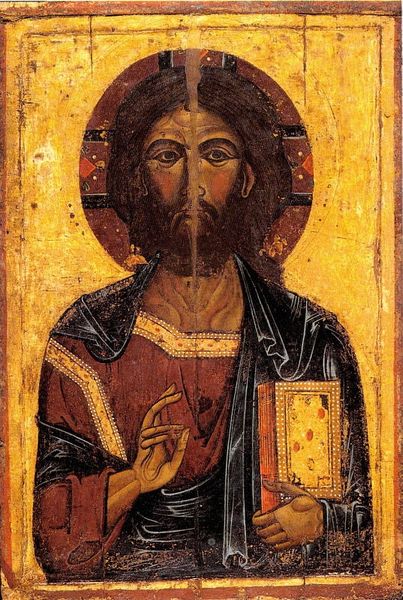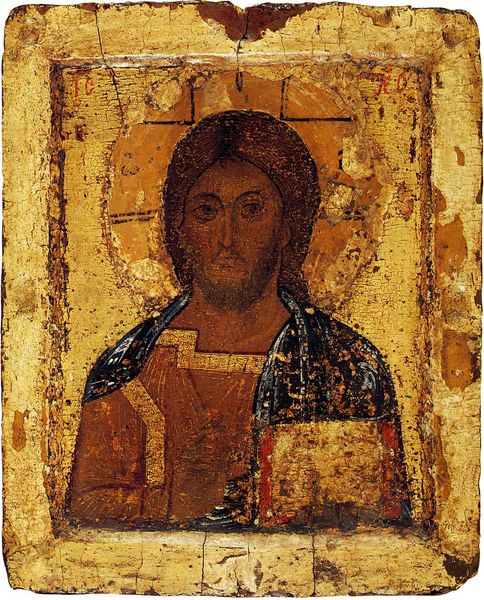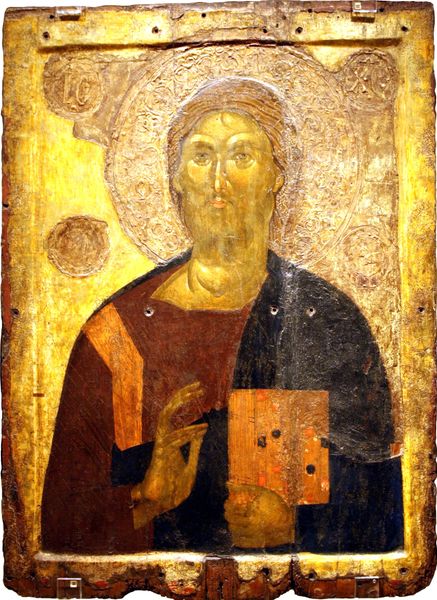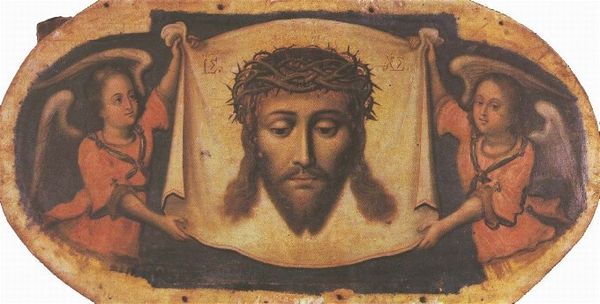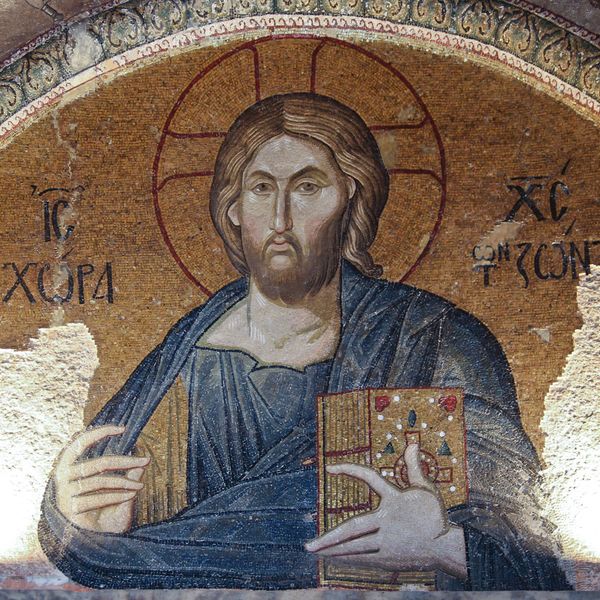
tempera, painting
#
portrait
#
face
#
byzantine-art
#
portrait image
#
tempera
#
portrait
#
painting
#
close up portrait
#
figuration
#
male portrait
#
portrait reference
#
portrait head and shoulder
#
mid-section and head portrait
#
facial portrait
#
christ
#
digital portrait
Dimensions: 8 3/8 x 7 1/8 in. (21.3 x 18.1 cm)
Copyright: Public Domain
Emmanuel Tzanès painted this icon of the Head of Christ sometime in the 17th century. Painted on a wooden panel, this image forms part of a tradition of icon painting that stretches back to the Byzantine era, a tradition that was deeply embedded in the religious and cultural life of Greece at that time. Icons like this weren’t just paintings, but were seen as sacred objects, believed to possess a spiritual presence. The halo, the stylized features, and the somber expression all work together to convey a sense of divinity and timelessness. Tzanès was a master of the Cretan School, which flourished after the fall of Constantinople in 1453, blending Byzantine traditions with Western influences. To understand this image better, we might turn to theological texts, historical accounts of religious practices, and studies of Byzantine art and culture. Only then can we appreciate the depth of meaning and the social function that such icons held in their time.
Comments
No comments
Be the first to comment and join the conversation on the ultimate creative platform.

